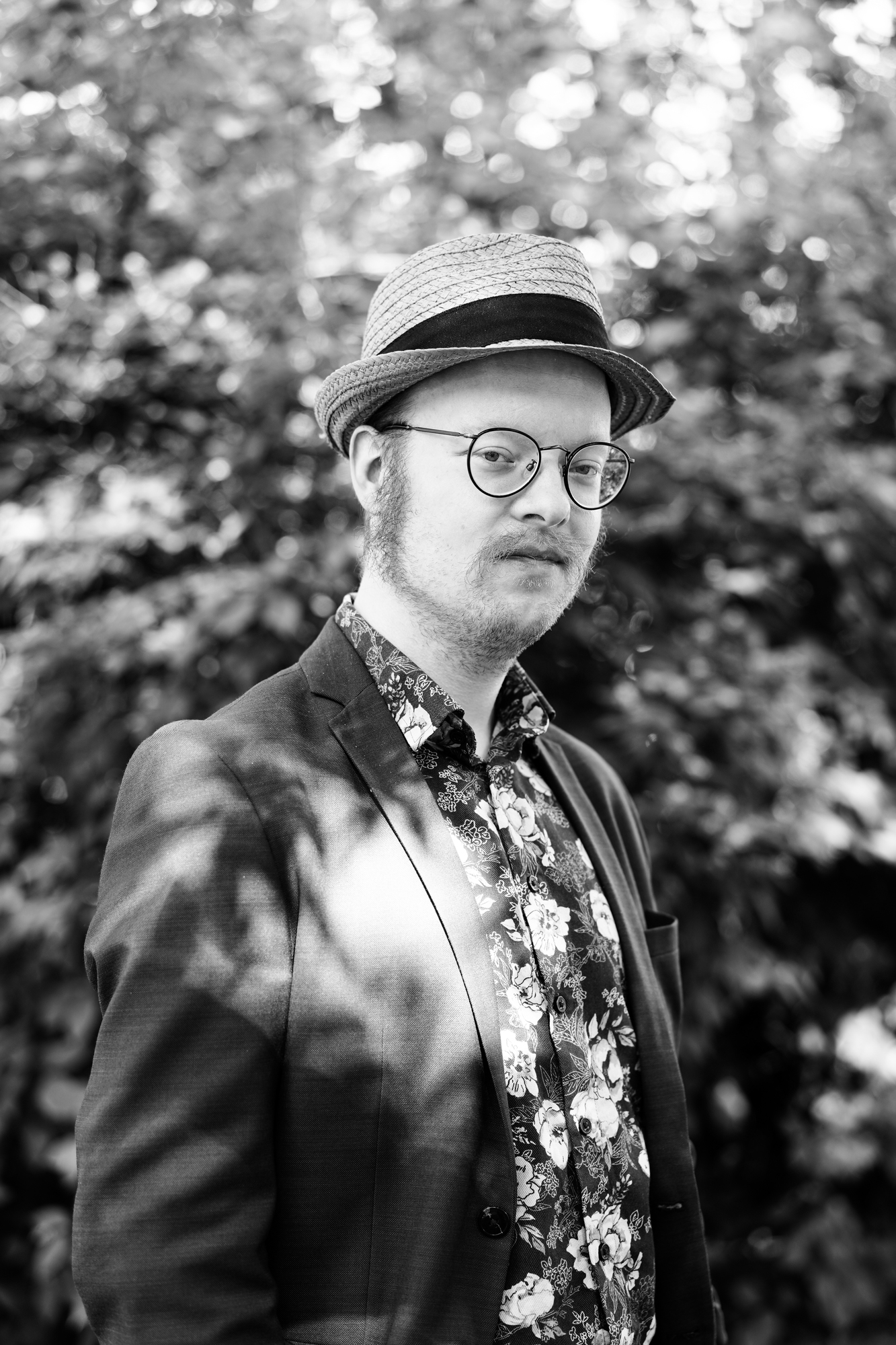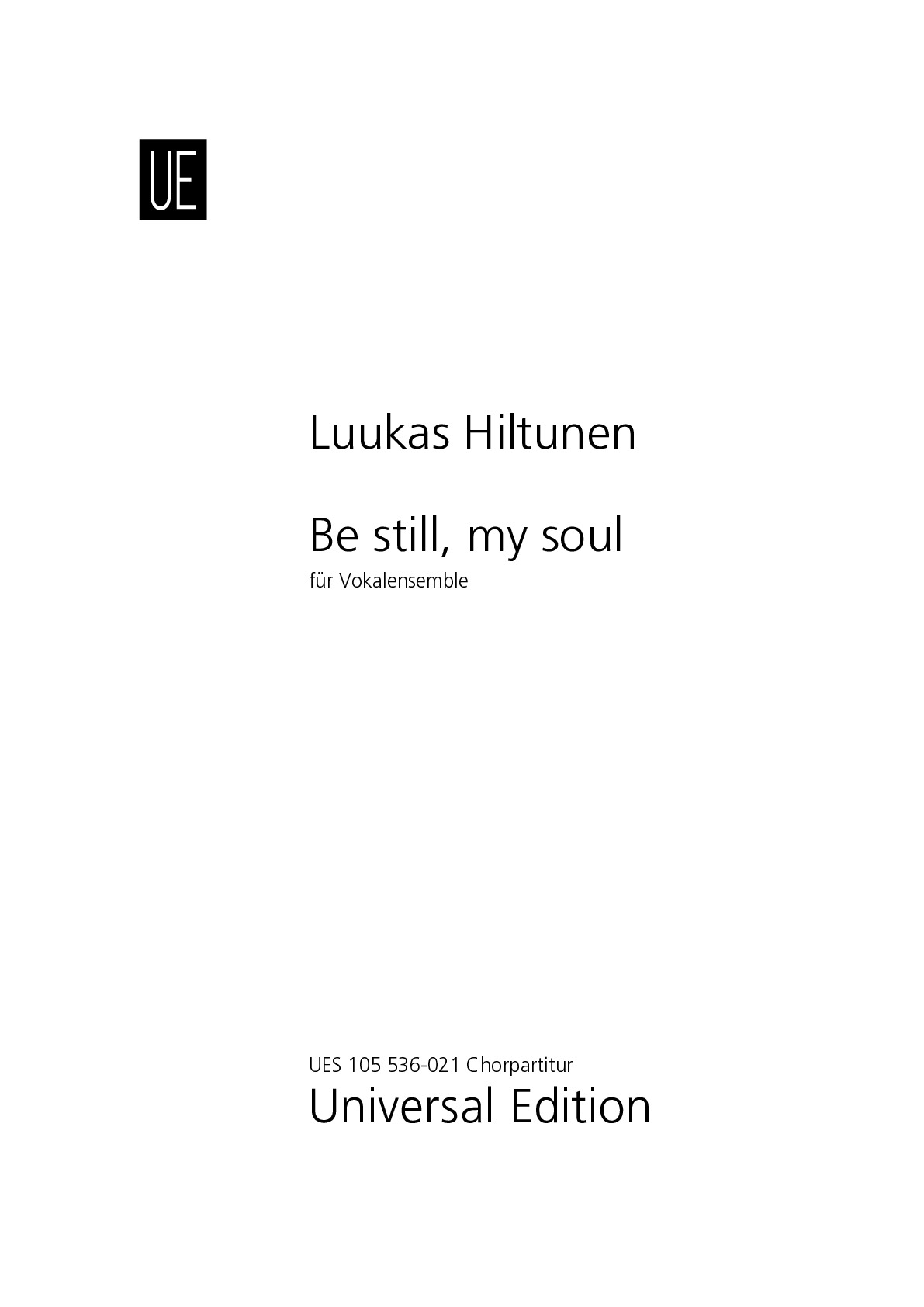

Luukas Hiltunen
Be still, my soul
Duration: 3'
Choir: vocal ensemble
Be still, my soul
Translation, reprints and more

Luukas Hiltunen
Vokalensemble (Be still, my soul)Type: Chorpartitur
Sample pages
Work introduction
Mr. Luukas Hiltunen's Be still, my soul for ATB choir a cappella (2023) for the hymn text by the Archbishop of York, William Maclagan (1826–1910), was composed only in two days on 17th and 20th July 2023 as the result of the lack of a comprehensive supply of approachable contemporary meditative sacred music for an unaccompaniment choir, except for a few well-established choral works. These works include Samuel Barber's (1910–1981) Agnus Dei (1967), his own arrangement of his Adagio for Strings (1936), Sir John Tavener's (1944–2013) The Lamb (1982), Sir James MacMillan's (b. 1959) Miserere (2009) and Arvo Pärt's (b. 1935) Summa (1977).
Be still, my soul is intended to be performed mainly during the Eucharist, although it can be performed in other contexts as well – for silence, momentary services, choral evensongs and so on, as well as at the concerts of sacred music in churches and cathedrals.
What is necessary to perform this work?
Directions for the performance
For concert setting: The choir should be placed behind the altar on the podium so that a small ensemble or even a larger orchestra performing at the same event may already be seated when the work is performed as the opening or closing number. The larger the choir, the more scrupulously the guideline with sincere expression should be taken into account.
For service setting: The number of singers naturally affects the intimacy of the music: a minimum of six vocalists, i.e. one voice for each stave, is suitable for a smaller-scale service. Whatever the number of singers may be, the choir should be placed on the organ gallery at the very back of the main hall, so that the illusion of the singing being heard from a considerable distance is appropriately realised. The advice above especially applies in the case of a large and echoing cathedral. If there is no organ gallery, the choir should be placed on the opposite sides at the front of the hall, so that the singers surround the central altar on both sides.
For both instances: Commas are representing throughoutly only indications of brief breathing moments and should not be understood as cutting points of musical phrases. Fermata at the last measure should be long enough, at least 10 seconds, depending on the acoustics of the venue, so that the affecting nature of the final amen-phrase would achieve its full effectiveness. The duration of the work has been calculated according to the metronome marking at the beginning and, despite its direct indication, is indicative. Depending on the nature of the event, the tempo may be slightly slower, but not too much, up to a maximum of five units. The same applies to a faster pace – the spiritual atmosphere of music must be retained.
